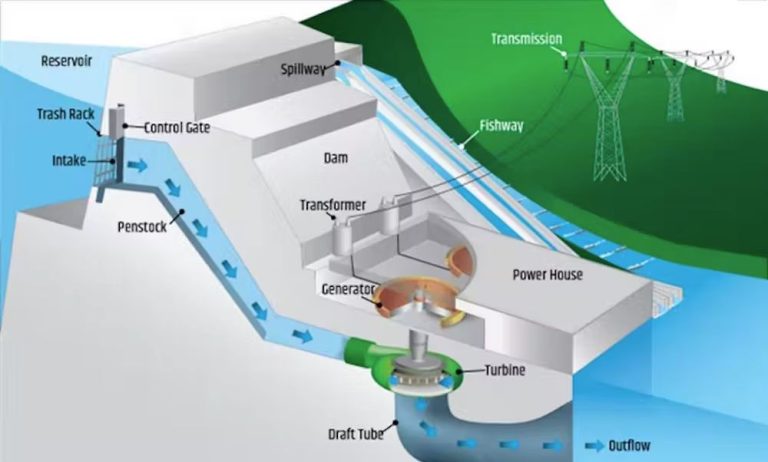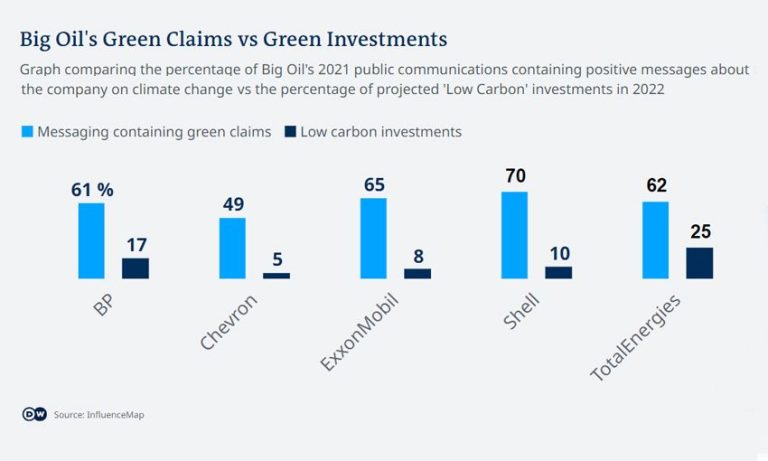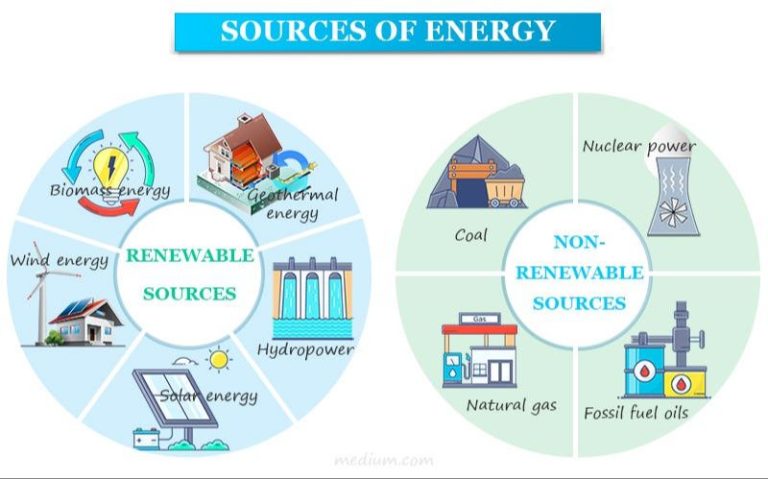Why Should Renewable Energy Be Used More?
The Growing Demand for Energy
World energy consumption has increased significantly in recent decades and is projected to continue rising as the global population grows and developing nations industrialize. Most projections indicate that total world energy demand will be over 50% higher in 2050 than it was in 2020.
Despite growth in renewable energy, most of our energy still comes from fossil fuels like oil, coal and gas. In 2019, approximately 84% of global energy consumption was fueled by oil, natural gas and coal. Reliance on these finite resources raises concerns about energy security as well as environmental sustainability.
As energy demand continues to increase, there is an urgent need to transition to more renewable sources that are clean, abundant and replenishable. We need to find ways to meet growing energy demand more sustainably while reducing greenhouse gas emissions and dependence on imported fossil fuels. The expansion of renewables is critical for building a low-carbon future and ensuring long-term energy supply.
The Environmental Impacts of Fossil Fuels

The extraction, transportation, and especially the burning of fossil fuels like coal, oil, and natural gas have major negative impacts on the environment and public health. When burned, fossil fuels emit large amounts of carbon dioxide (CO2) and other greenhouse gases that accumulate in the atmosphere and are the leading driver of climate change. The impacts of climate change include increasing temperatures, rising sea levels, melting ice caps, more severe storms, and disruption of ecosystems. Beyond their role in climate change, fossil fuel emissions also degrade air quality and are linked to respiratory illnesses, heart disease, and premature deaths.
In addition to harmful emissions, the extraction and transportation of fossil fuels can damage sensitive ecosystems, pollute waterways, and fragment wildlife habitats. Oil spills during offshore drilling or from tankers and pipelines have catastrophic effects on marine life. Mining coal through mountaintop removal devastates forests and streams. Even when transported safely, the infrastructure built for fossil fuel extraction fragments the habitats of endangered species.
In contrast, renewable energy sources like solar, wind, geothermal, and hydropower generate electricity without these harmful emissions and minimize environmental damage from extraction. Wildlife disturbances are isolated and localized compared to widespread fossil fuel impacts. While renewables are not emission-free over their life cycles, multiple studies confirm their advantages over fossil fuels in greenhouse gas emissions, air pollution, and habitat destruction. Transitioning from fossil fuels to clean energy is essential for avoiding further environmental damage and protecting both ecosystems and public health.
The Benefits of Renewable Energy
Renewable energy sources like solar, wind, and hydropower offer major benefits over fossil fuels. First, they produce electricity without emitting greenhouse gases or other pollutants into the atmosphere. Whereas burning coal, oil, and natural gas releases carbon dioxide, particulates, sulfur dioxide, nitrogen oxides, and other harmful substances, renewables generate power cleanly. This makes them better for public health and the environment.
In addition, costs for renewable power have plummeted over the last decade, making wind and solar competitive with conventional energy in many markets. In favorable locations, building new solar or wind farms is now less expensive than operating existing coal plants. As technology continues advancing and deployment expands, experts expect renewables to become even more cost-effective.
Furthermore, transitioning to clean sources like renewables reduces air pollution and its health impacts. Fossil fuel emissions worsen air quality and contribute to asthma, lung cancer, heart disease, and other illnesses. Incorporating more solar, wind, and hydropower avoids these pollutants, improving respiratory health and saving lives.
The Main Renewable Energy Sources
There are several major renewable energy sources that show great potential to replace fossil fuels. Solar power harnesses energy from the sun through photovoltaic panels and concentrated solar plants. Photovoltaic panels convert sunlight directly into electricity using semiconducting materials, while concentrated solar plants use mirrors to focus sunlight to heat fluids and generate steam to drive turbine generators. Solar energy can be implemented on both small and utility-scale systems.
Wind power utilizes the natural kinetic energy of wind to spin large turbine blades connected to generators. Wind farms consisting of hundreds of tall towers with turbine rotors can be built onshore or offshore in windy locations. Wind power is one of the fastest growing renewable sources globally.
Hydropower has traditionally been a major source of renewable electricity by utilizing the energy of flowing water at dams and reservoirs to drive turbine generators. Newer technologies are emerging to harness tidal and wave energy from ocean currents and tides. While most major hydropower resources have already been utilized, newer technologies may expand hydropower further.
Geothermal power taps into the natural heat inside the earth by using hot water or steam from deep underground to produce electricity. Geothermal plants are located at tectonic plate boundaries or hot spots where heat rises closest to the surface. Enhanced geothermal systems can boost output by injecting water to be heated in hot rock formations.
Biomass energy uses organic matter from plants and waste as a fuel source through direct combustion, gasification, anaerobic digestion, or conversion to liquid biofuels. Common examples are wood-burning, landfill gas, biogas from sewage, and liquid biofuels like ethanol and biodiesel. While often carbon-neutral, largescale biomass faces sustainability concerns.
Expanding the Role of Renewables
There are several ways in which the role of renewable energy can be expanded worldwide. Many countries have set ambitious renewable energy targets as part of their commitments to reduce greenhouse gas emissions and mitigate climate change. For example, the European Union aims for renewables to comprise 32% of its energy mix by 2030. The United States targets 30% renewable electricity generation by 2030. China wants renewables to account for 35% of its electricity consumption by 2030. India is targeting 175 gigawatts of renewable energy capacity by 2022.
Government policies can help accelerate the transition to renewables through incentives like tax credits, subsidies, and feed-in tariffs for renewable power generation. Governments can also implement renewable portfolio standards and mandates that require utilities to source a minimum portion of their electricity from renewables. These policy measures help overcome cost barriers for renewable energy and make them more financially viable.
Individuals can also play a role by choosing renewable energy options where available. More consumers are opting for renewable electricity plans from their utility provider. Community solar programs allow households to subscribe to a shared solar installation. Installing rooftop solar panels is another option for homeowners to generate their own renewable electricity. As demand grows from both large-scale policies and consumer choices, renewables will continue to expand their role in energy systems globally.
The Economics of Renewables
The costs of renewable energy technologies, especially wind and solar, have fallen dramatically in the past decade. In many parts of the world, renewables are now the cheapest source of new electricity generation. The levelized cost of electricity (LCOE) from utility-scale solar photovoltaics declined 88% between 2009 and 2019, while the LCOE of onshore wind fell 70% over the same period according to Lazard data. Renewables are now frequently less expensive than even the marginal costs of existing coal and gas generators.
Long-term renewable energy procurement through power purchase agreements provides protection against fuel price volatility. The fuel costs of wind and solar are zero, while fossil fuel prices can fluctuate unpredictably. Locking in fixed prices through long-term contracts helps create stability for power purchasers. Many major corporations have already signed large renewable energy contracts to lock in low prices.
Overcoming Renewable Energy Challenges
The renewable energy transition faces some key challenges that need to be addressed. One major issue is the intermittency of wind and solar power, which require grid flexibility and storage solutions. Since the wind doesn’t always blow and the sun doesn’t always shine, renewables can have variable outputs that do not perfectly match demand. This means grid operators need to balance the system with dispatchable power sources like hydro or gas plants. Energy storage like batteries and pumped hydro can also help smooth out renewable supplies. Further grid flexibility comes from interconnections over larger areas to balance regional weather effects, demand management to shift usage, and smart grid technologies.
Despite rapidly falling costs, the upfront capital expense of building wind and solar farms remains higher than fossil fuel plants. Renewables are very cheap to operate, but have a higher initial investment which creates a barrier. However, as technology improves and scale increases, renewable prices should eventually be lower than legacy energy systems in most locations. Meanwhile, subsidies and financing options can help overcome the upfront cost hurdle.
The fossil fuel industry sees its market share threatened by the rise of renewables and spends significant resources lobbying to impede policies that accelerate the transition. For example, fossil fuel companies fund campaigns against renewable subsidies, carbon pricing, and clean energy mandates. Overcoming this resistance from entrenched interests is an ongoing political challenge. However, growing public concern over climate change and air pollution are strengthening the political will to enact pro-renewable policies.
Case Studies and Success Stories
Many regions around the world are demonstrating how a transition to high renewable energy penetration is achievable when the right policies and technologies come together. For example, the state of South Australia now regularly exceeds 100% renewable electricity production through its huge investments in wind and solar power. This success has been enabled by favorable state policies like renewable energy targets, along with incentives for rooftop solar and grid-scale renewable projects. South Australia has also invested heavily in grid optimization technologies like batteries and demand management systems to maintain reliability as more variable renewables come online.
Another leader is Portugal, which runs on renewable electricity for an average of 103 hours each month. Portugal’s high renewable mix is thanks to consistent policies that incentivize wind, solar, hydropower and other renewables through feed-in tariffs, auctions and tax exemptions. The country has also developed a sophisticated smart grid to balance supply and demand. Through these supportive policies and grid modernization efforts, Portugal aims to be completely coal-free by 2030.
At a more local level, cities like Vancouver in Canada have demonstrated how community choice aggregation programs can drive renewable uptake. By collectively purchasing renewable energy on behalf of the city’s residents and businesses, Vancouver has negotiated favorable clean energy rates and enabled large scale renewable energy investments. This model has allowed the city to quickly transition to 100% renewable electricity while keeping costs affordable for its citizens.
These examples showcase that with the right policy drivers, incentives and technologies, a high penetration of renewables can be achieved economically and reliably. The transition may take time, but these leading locations provide models for success that can be replicated worldwide.
The Future Potential of Renewables
Renewables have vast untapped potential across the world. Wind, solar, hydropower, geothermal, and other renewable energy sources could realistically provide the bulk of the world’s electricity generation in the coming decades. The most abundant renewable resource is solar energy. The amount of solar radiation striking the earth’s surface in just one hour is more than the total global energy consumption for an entire year. Capturing even a small fraction of this through solar panels and other technologies would dramatically transform our energy system.
With continued improvements in technology and cost reductions through economies of scale, renewables are becoming increasingly cost competitive with fossil fuels. The costs of solar panels and wind turbines have dropped substantially in the past decade. Further innovation and deployment could drive costs down much further. If this trend continues, renewables will be the cheapest form of new electricity generation in most parts of the world within the next 5-10 years.
Widespread adoption of renewables has the potential to enable sustainable economic growth while significantly reducing carbon emissions and air pollution. Rather than facing a tradeoff between the economy and the environment, renewable energy allows us to benefit both. With enlightened policies and public support, renewables can realistically provide 50-70% of global electricity by 2050. This energy transition would put society on a path towards a low carbon future and help achieve international climate change mitigation goals.
Calls to Action
Transitioning to renewable energy on a global scale will require significant policy shifts by governments as well as major investments from both the public and private sectors. Subsidies and tax incentives can encourage adoption of renewables, while carbon pricing and caps on emissions can discourage continued fossil fuel dependence. Updating electrical grids, expanding transmission infrastructure, streamlining permitting processes, and funding R&D are also key. Citizens can support pro-renewables policies and politicians. Businesses must commit to procuring clean energy, while investors should provide capital to promising startups and projects. Nonprofits can run awareness campaigns and apply pressure on lawmakers. There are roles for all of us to play.
With the stark environmental threats posed by climate change, the transition to renewable energy is an urgent priority. The environmental benefits of radical emissions reductions through renewables are immense. There are also tremendous economic incentives in the form of jobs, innovation, energy independence and future export opportunities. The planet’s health and our shared prosperity depend on rapidly scaling up renewable energy in all sectors of society. The time for action is now.






